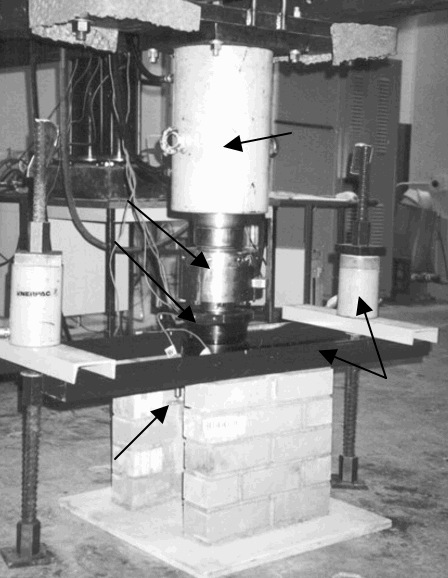S.L. Lissel[1] and N.G. Shrive[2]
- PhD Candidate, Civil Engineering Department, University of Calgary, 2500 University Dr. NW Calgary, AB, T2N 1N4, Email: sllissel@ucalgary.ca
- Killam Memorial Professor, Civil Engineering Department, University of Calgary, Email: shrive@ucalgary.ca
ABSTRACT
In cavity and diaphragm wall construction, problems arise due to the use of the steel connectors. Corrosion is one of the major concerns. Tests on post-tensioned diaphragm walls also indicate that the type of connection between the webs and flanges of the wall (bonded versus tied) has a significant effect on the behaviour of the wall under structural loading. Further, shear tests on panels indicate that bed reinforcement does not increase shear strength. To eliminate the corrosion problems and in an effort to improve the strength of tied connections, the potential of using advanced composite materials as connectors has been investigated. A new Glass Fibre Reinforced Polymer (GFRP) shear connector for masonry has been developed. Tests on web-flange connections in a series of H shaped specimens have shown that there is an increase in strength with these connectors relative to regular steel connectors. The strength of these connectors versus that of bonded connections was also investigated.
Keywords: Diaphragm walls, Shear connectors, Wall ties, FRP, Bond pattern, Web/flange connections
FRP07



